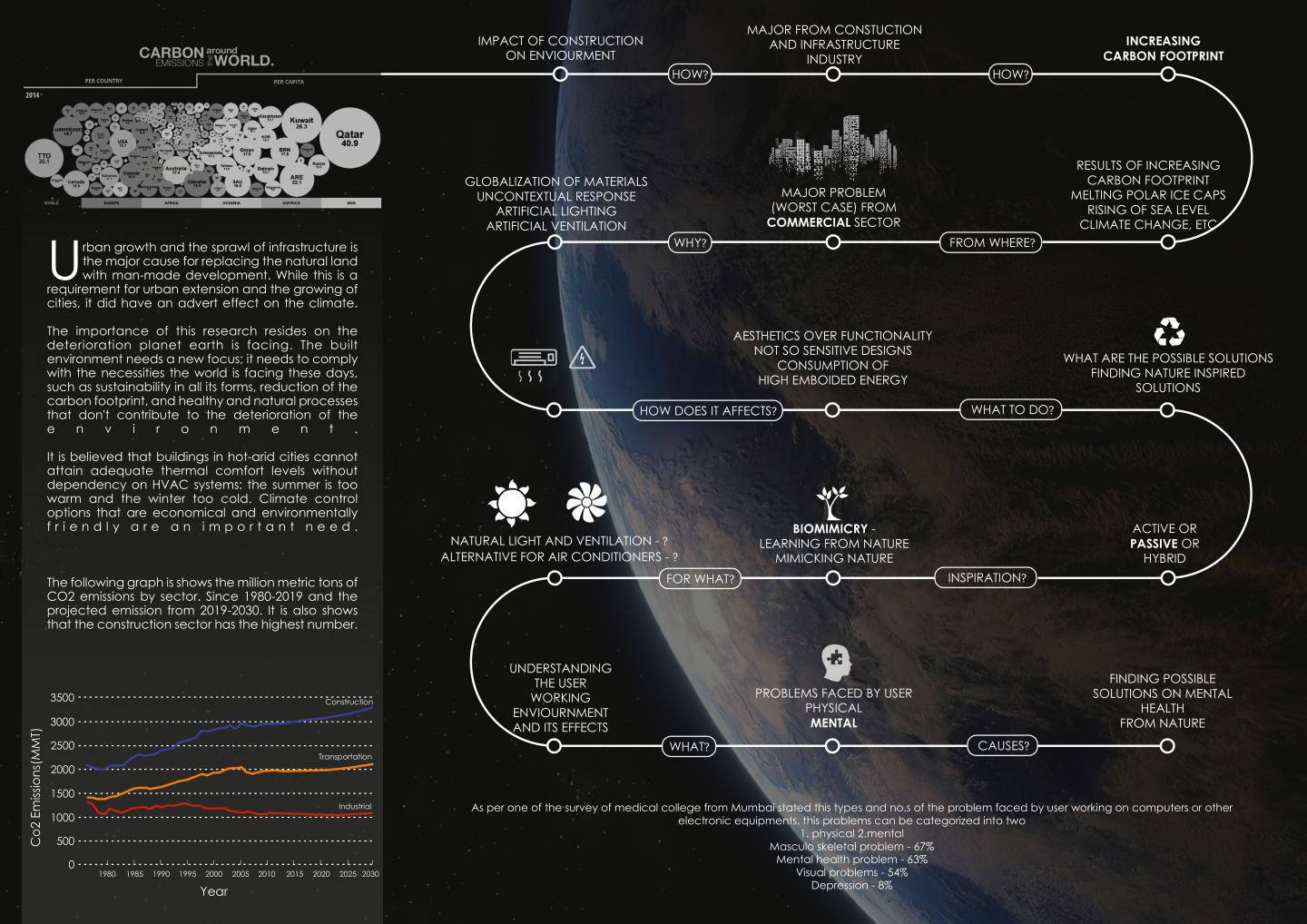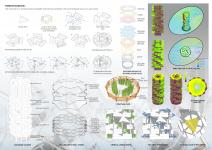THE CURIOSITY AND CONCERN -
While I was in my 3rd academic year; for our contemporary seminar lecture I was preparing for the seminar on my topic: Functionalism in biomimicry. From there my interest in biomimicryarosed.And while doing that I came across an article stating about carbon footprint across the globe and the adverse effect of it.
It was really shocking and common people don’t know this issues and our society is not fully aware of this. Unless and until the problem comes to the doorstep no one bother to do something about it.
While studying the concept of biomimicry, it was noted that the reasons for global problems like landslides in Bhutan, polar ice caps melting in Antarctica, rise in sea level water, etc is carbon footprint. A carbon footprint is the amount of carbon dioxide released into the atmosphere as a result of the activities of a particular individual, organization, or community. It is observed from the research that the commercial sector contributes to the maximum amount of carbon footprint. Hence mix-use commercial building is designed to understand the problems and propose the best suitable solution for the same. The probable reasons for the increase in carbon footprint are the globalization of materials, non-contextual response to the site and surroundings and maximum use of artificial lighting and ventilation. For the facade of the building double glazed unit is used for aesthetics and insulation without knowing the embodied energy of the glass as a material. The air gap in the double-glazed unit traps heat, increasing the load on the artificial air conditioning of the building ultimately leading to an increase in the carbon footprint. The natural light in a building can reach only till certain distance inside from the facade of the building, thus artificial lightings are used to satisfy the need. Extensive use of artificial lighting and ventilation makes building harmful for the environment. To reduce the embodied energy, passive methods need to be incorporated. Thus, the role of an architect is important to solve these issues by sensibly planning the structures and creating an environment-conscious design that holds with it traditional values along with its contemporary touch.
THE RAISED QUESTIONS –
What are the main issues causing this situation?
Am I able to contribute in the solution? If yes then how?
Is there any architectural solution exists for this scenario?
What are the methods to contribute in the solution?
THE ISSUES –
The major contribution to the cause of this situation is construction and infrastructure industry. Due to inappropriate use of HVAC system, globalization of material, no contextual response, insensitive designs, artificial lighting, etc are the major issues of this field.
2019
0000
ARCHITECTURAL RESEARCH –
The research method is qualitative research.
While doing case studies and collecting data I got to know about,
AR. MICK PEARCE
Zimbabwe based architect, designed buildings inspired from nature
Case studies- East gate centre, Harare and council house 2, Zimbabwe
He designed a mall without using artificial ventilation with making the building more energy efficient.
ARCHITECTURAL STRATEGY AND SOLUTION –
To solve the problem of the increase in carbon footprint, nature-inspired solutions are optimum. An example of the simple architecture of a termite mound is one of the most sophisticated animal-built structures on the planet. By taking inspiration and following the principles of design of the termite mound structures, high rise structures can be made more sustainable. The termite mound works with nature within nature using all sorts of natural components. The ant mound uses evaporative cooling, thermosiphon, induced model flow, the venturi effect, etc.
To remove artificial ventilation the building is designed considering these principles which will allow the building to ventilate naturally.
Also, to achieve diffused daylight through the day inside the building, the facade is designed taking inspiration from the shape and structure of the buttercup flower. The multi-layered petal of buttercup gave rise to the concept of the multi-layered light shelf.
Nowadays due to scarcity of space, open or green spaces are not seen in IT/ commercial sector buildings creating a dull work environment. Due to such a work environment, people face problems like depression, anxiety, stress, frustration, negativity, mental fatigue and many more. To overcome such problems, the spaces are designed considering the activity schedule of the workers, their desire to connect with nature and other people in the office. In a place like Pune where the climate allows and encourages outdoor living, man-made connections with nature have been established by providing green break out spaces on every floor, for each office space. Rotation of the floor plate allows self-shading spaces and gives a 360-degree view from the building. The light is allowed to enter into the building through the central light well around which the cores are planned.
Favorited 1 times













